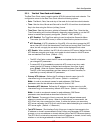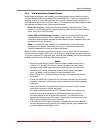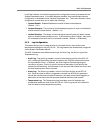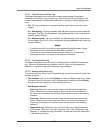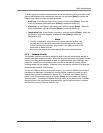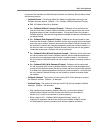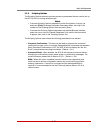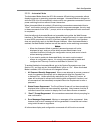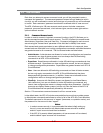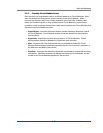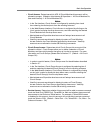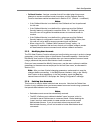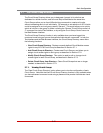
5-14
Basic Configuration
5.3.5.1. Automated Mode
The Automated Mode allows the AFS-16 to execute A/B switching commands, without
displaying menus or generating response messages. Automated Mode is designed to
allow the AFS-16 to be controlled by a device which can generate commands to control
power switching functions without human intervention.
When Automated Mode is enabled, A/B switching commands are executed without a
“Sure?” confirmation prompt and without command response messages; the only reply
to these commands is the “AFS>” prompt, which is re-displayed when each command
is completed.
Note that although Automated Mode can be enabled using either the Web Browser
Interface or Text Interface, the Automated Mode is designed primarily for users who wish
to send ASCII commands to the AFS-16 without operator intervention, and therefore
does not specifically apply to the Web Browser Interface. When Automated Mode is
enabled, the Web Browser Interface can still be used to invoke switching commands.
Notes:
• WhentheAutomatedModeisenabled,passwordpromptswillnotbe
displayedatlogin,andyouwillbeabletoaccessAdministratorLevel
commandfunctions(includingtheconfigurationmenus)andcontrolcircuits
withoutenteringapassword.
• IfyouneedtoenabletheAutomatedMode,butwanttorestrictnetwork
accesstoconfigurationmenus,itisstronglyrecommendedtoenableand
configuretheIPSecurityFunctionasdescribedinSection5.9.3.
To enable/disable the Automated Mode, go to the System Parameters menu (see
Section 5.3,) and then set the “Automated Mode” option to “On”. When Automated
Mode is enabled, AFS-16 functions will change as follows:
1. AllPasswordSecuritySuppressed: When a user attempts to access command
mode, the password prompt will not be displayed at either the Console Port
or Network Port. Unless specifically restricted by the IP Security Function, all
users will be allowed to access both switching and configuration functions, and
all commands will be immediately accepted without the requirement to enter a
password.
2. StatusScreenSuppressed: The Circuit Status Screen will not be automatically
displayed after commands are successfully executed. Note however, that the /S
command can still be invoked to display the Circuit Status Screen as needed.
3. “Sure?”PromptSuppressed: All commands are executed without prompting for
user confirmation.
4. ErrorMessagesSuppressed: Most error messages will be suppressed. Note
however, that an error message will still be generated if commands are invoked
using invalid formats or arguments.
All other status display and configuration commands will still function as normal.




